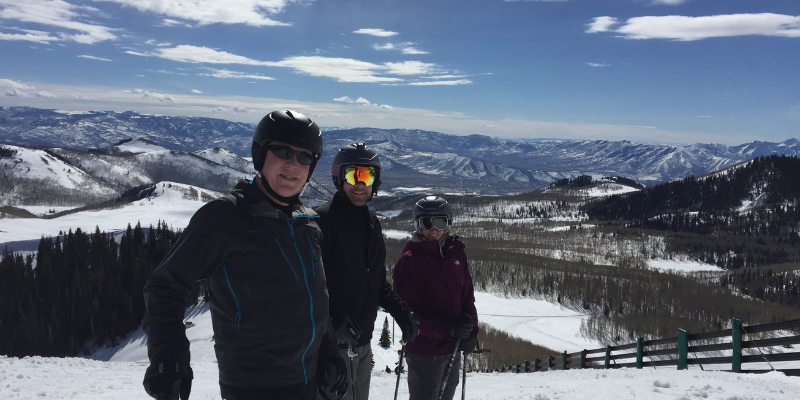How the Fourth Industrial Revolution and COVID-19 have combined to change the world as we knew it.
Riding a motorcycle is a combination of thrill, relaxation, and pleasure that has always exhilarated me. Survival on a street cruiser requires practiced skills, reflexes, and pretty much 100 percent of your brain capacity – except for the part of your brain enjoying the rush of the wind, the sun on your shoulders, and the satisfaction of finding the perfect line through a curve.
Eventually, however, every motorcycle rider arrives at their own time of reckoning – the first time they ride in rainy, wet conditions. Riding in the rain is not just about staying dry – it means quickly replacing old habits with changes that don’t feel natural and comfortable. Oil lifted to the road surface by rainwater will cause loss of traction, and the rain reduces your visibility and that of other vehicles. Leaning into a curve at too much of an angle on a wet road could land you in the emergency room. It becomes imperative to your very survival that you keep your vision high, your inputs smooth, and your momentum steady.
Like riding on dry pavement, many organizational leaders have already been adapting to the “Fourth Industrial Revolution” (4IR). They either survived or were born into the Third (digital) Revolution and have been primed for blurring of boundaries associated with the physical, digital, and biological worlds – changes brought forth by advances in artificial intelligence, robotics, 3D printing, genetic engineering, and other technologies.
The COVID-19 pandemic, however, is a storm few people saw coming. Its almost unimaginable impact has dramatically accelerated the whirlwind pace of the Fourth Industrial Revolution. To survive these changes, business leaders must quickly adapt their organizational strategies – continuing critical progress by learning to “ride in the rain.” As Helen Keller said, “A bend in the road is not the end of the road, unless you fail to make the turn.”
How will businesses be affected by the COVID-19 pandemic-quickened pace of the 4IR?
The landscape of how we look at work has already changed. In his 2016 book, The Fourth Industrial Revolution, Klaus Schwab of the World Economic Forum noted that the 4IR could lead to greater inequality, “particularly in its potential to disrupt labor markets.” He observed that the job market might become increasingly segregated and what we view as traditional work activities would be profoundly changed. For example:
- Sales leaders need to find new ways to sell. For now, there will be no throngs of buyers at trade shows, no fancy dinners, and no dropping off donuts. Digital transformation has altered the way businesses buy and sell forever, and the pandemic has forced the immediate implementation of new ways to reach potential customers.
- Relationships between employee team members have lost the centralized “water cooler” connection. Utilization of remote workers has gone from small, rather isolated sectors to a significant portion of our workforce. Business leaders must adjust quickly in order to manage productivity and find new methods of employee engagement.
- Changed forever are the types and amounts of organizational work activities that take place within the company. Can your remote managers get their departments to “shine” when much of what they manage is no longer immediately visible? It requires an entirely new skill set to maintain organizational strategies and goals when employees – including leaders – may be concerned for their health, safety, and possibly even their future employment.
How do leaders best apply new organizational strategies to adapt to these changing work activities?
We must drop yesterday’s assumptions in order to see tomorrow’s possibilities.
- Identifying Strategic Work: I have spent a considerable amount of time talking with executive leaders about how work is being done in their organizations and how work activities must be aligned to the strategic goals of the organization itself. One step toward achieving this is understanding which work activities are directly tied to delivering the strategy and which ones are not, as not all work is equal. This is not an assessment of importance, but rather a determination to assess where this work should sit in the organization to most effectively and efficiently deliver value.
- Responding to Change: When work activities change within an organization (i.e., how the work is being done), it should not be assumed that this work should remain exactly where it was before the change. For example, an organization may be pivoting from traditional face-to-face sales in order to build and develop a robust online sales platform. Leaders should consider anew where these work activities sit in the organization, how they are prioritized and resourced, and how they are nested to the strategic initiatives of the company. Some positions might need to be eliminated, but it is more likely that it is the roles that will change. Sales reps, for example, may need to be utilized to help potential clients navigate copious amounts of market data to make the best decision for their organization.
- Measuring Performance: As the work environment and work activities change, how will we measure performance? Determining new and actionable data metrics and defining what constitutes success will be critical to a business trying to survive in a rapidly changing environment. It’s important to start acting now to capture your new data requirements and determine how they will be presented to help leaders make quicker, better-informed decisions and pivot if necessary.
- Asking Questions: Gathering employee input may provide some surprising insights and doing so may also provide an opportunity to remind employees of the organization’s strategic vision. Harnessing the Power of Engaging Questions will help you to find ways to make a personal connection and learn what is motivating your employees.
You’ve likely heard the adage, “Life is not about waiting for the storms to pass; it’s about learning to ride in the rain.” As we weather this storm together, our success will be influenced by how well we can adapt to the rain, replacing our old ways and organizational strategies with a new vision and being willing to react quickly to changing conditions.





